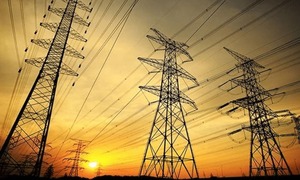Potential Electricity Bill Surge Expected This Summer
The government has issued a warning regarding a possible increase in electricity costs during the summer season. This projection is due to decreased hydroelectric power generation and an increased dependence on costlier fuel sources, despite minor reductions through the Fuel Cost Adjustment (FCA) and Quarterly Tariff Adjustment (QTA) mechanisms.
Officials from the National Power Control Centre (NPCC) and Central Power Purchasing Agency – Guaranteed (CPPA-G) presented this information during public hearings conducted by the National Electric Power Regulatory Authority (Nepra). The hearings addressed the FCA for March 2025 and the QTA for the third quarter of FY2024-25 (January–March).
Nepra representatives indicated that the QTA is anticipated to result in a negative adjustment of Rs 1.52 per unit, which will be effective in May, June, and July 2025.
Energy Sector Reforms and IMF Commitments
Distribution companies (Discos) have requested a total decrease of Rs 51.493 billion. A substantial portion, Rs 47.124 billion, is attributed to lower capacity charges, including Rs 16 billion from contract terminations and Rs 17 billion from revised agreements with Independent Power Producers (IPPs). This adjustment will also benefit K-Electric consumers. Savings from revised and terminated agreements have reached approximately Rs 91 billion to date.
A negative adjustment of 3 paisa per unit has been proposed for March’s FCA, with an overall financial impact of Rs 250 million. However, when combined with the 90 paisa per unit already approved for April through June 2025, the overall relief for consumers will be limited to 50 paisa per unit, excluding lifeline consumers.
The actual fuel cost for March was Rs 9.2251 per unit, against a reference FCA of Rs 9.2560 per unit. CPPA-G CEO Rihan Akhtar stated that the FCA would have had a more positive effect on consumer bills if the Rs 3.291 billion Prior Year Adjustment (PYA) had not been included.
The NPCC General Manager gave assurances that power generation would remain adequate due to fuel availability. However, they also pointed out that FCA expenses would rise because of the increased use of more expensive fuels.
According to the CPPA-G, electricity demand decreased by 6 percent in March 2025 compared to the reference month of 2024. However, there was a 6 percent increase in March compared to February 2025.
The NPCC reported an 8.70 percent decrease in energy transmission in March compared to the same month in 2024. They also provided details on routine and forced outages that led to the operation of costly power plants.
Industry Concerns and Regulatory Oversight
During the session, Arif Bilwani and Amir Sheikh raised inquiries about fuel allocation, future power generation strategies, and industry-related issues. Sheikh criticized the absence of advantages for the industrial sector, even after indigenous gas was released due to the forced transfer of captive power plants to the national grid. He sought clarification on the reallocation of this gas and advocated for increased FPA refunds to the industry.
Bilwani commented that government officials should use their own judgment rather than relying solely on external factors.
Nepra Chairman Waseem Mukhtar expressed strong disapproval of the absence of senior officials from the Power Division and three key distribution companies—HESCO, MEPCO, and PESCO. He directed Nepra staff to request explanations from their CEOs and send a formal letter to the Secretary Power.
“If this QTA had not been negative and beneficial to consumers, I would have rejected the petitions submitted by the Discos. Regrettably, this is the culture we operate in,” the Chairman stated.
Amir Sheikh requested that the QTA be implemented starting in April to fulfill promises made by the Prime Minister. “If the relief begins in May, the rate reduction promised by the PM will not materialize,” he noted.
Tanveer Barry of the Karachi Chamber of Commerce and Industry (KCCI) drew attention to the inadequate performance of Discos in controlling theft and bill recovery. He mentioned that Pakistan’s circular debt reached Rs 2.4 trillion in FY24, which is 2.3% of GDP, while transmission and distribution losses for Discos and K-Electric were 20.1% and 16%, respectively.
Barry also voiced concerns about the government’s consideration of new commercial loans to decrease circular debt, cautioning that the burden would ultimately fall on compliant consumers. “Electricity in Pakistan remains more expensive than in neighboring countries. We need to start working on lowering the base tariff for the next fiscal year, as this three-month relief is insufficient,” he concluded.



Comments (0)
No comments yet. Be the first to comment!
Leave a Comment